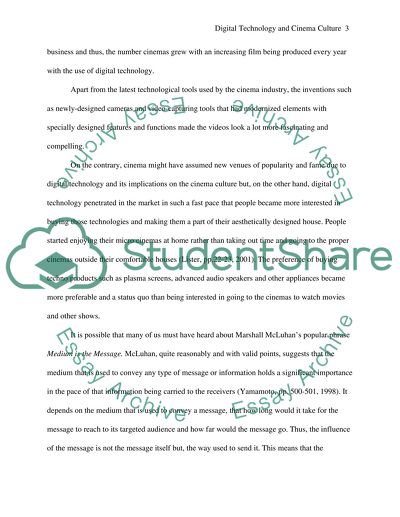Cite this document
(“Digital Technology and Cinema Culture Essay Example | Topics and Well Written Essays - 1750 words”, n.d.)
Retrieved from https://studentshare.org/environmental-studies/1413004-4-with-reference-to-relevant-theoretical-debates-explore-the-impact-of-digital-technologies-on-cinema-culture
Retrieved from https://studentshare.org/environmental-studies/1413004-4-with-reference-to-relevant-theoretical-debates-explore-the-impact-of-digital-technologies-on-cinema-culture
(Digital Technology and Cinema Culture Essay Example | Topics and Well Written Essays - 1750 Words)
https://studentshare.org/environmental-studies/1413004-4-with-reference-to-relevant-theoretical-debates-explore-the-impact-of-digital-technologies-on-cinema-culture.
https://studentshare.org/environmental-studies/1413004-4-with-reference-to-relevant-theoretical-debates-explore-the-impact-of-digital-technologies-on-cinema-culture.
“Digital Technology and Cinema Culture Essay Example | Topics and Well Written Essays - 1750 Words”, n.d. https://studentshare.org/environmental-studies/1413004-4-with-reference-to-relevant-theoretical-debates-explore-the-impact-of-digital-technologies-on-cinema-culture.


